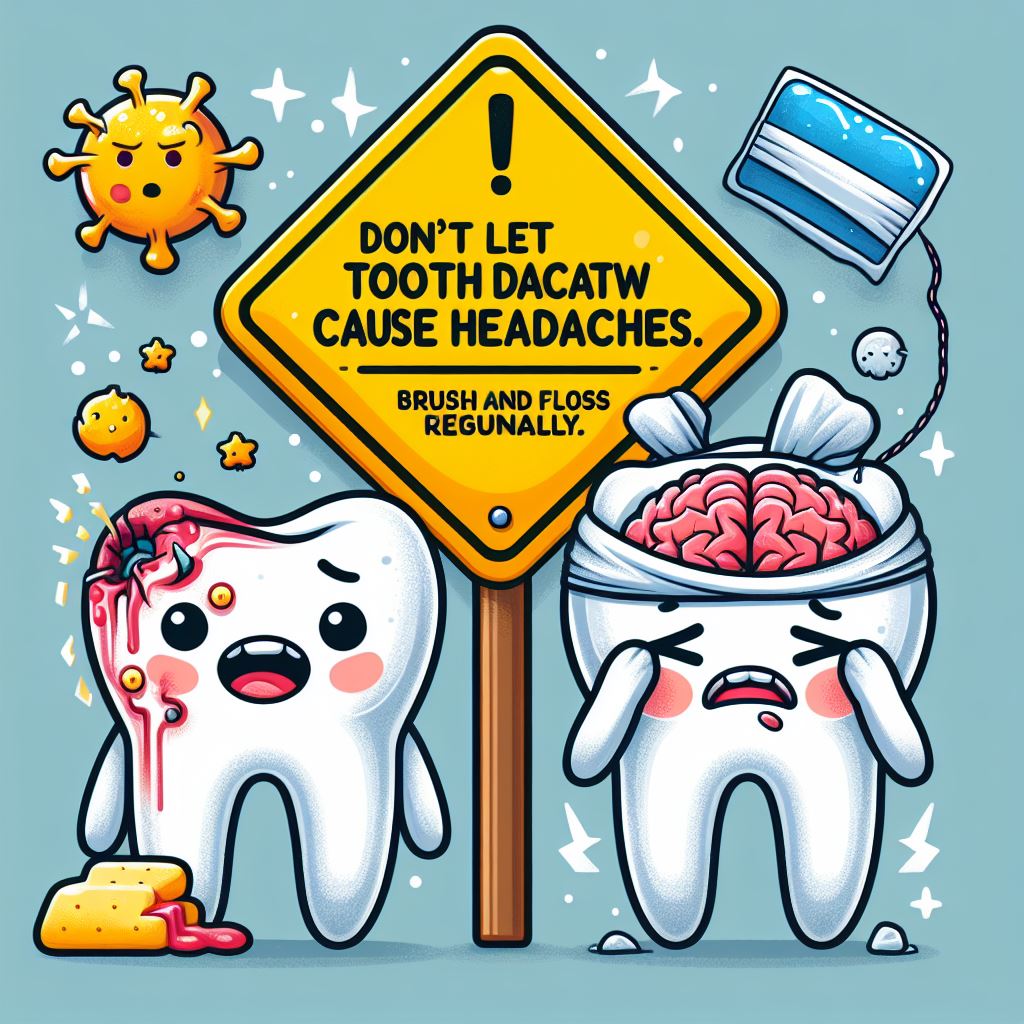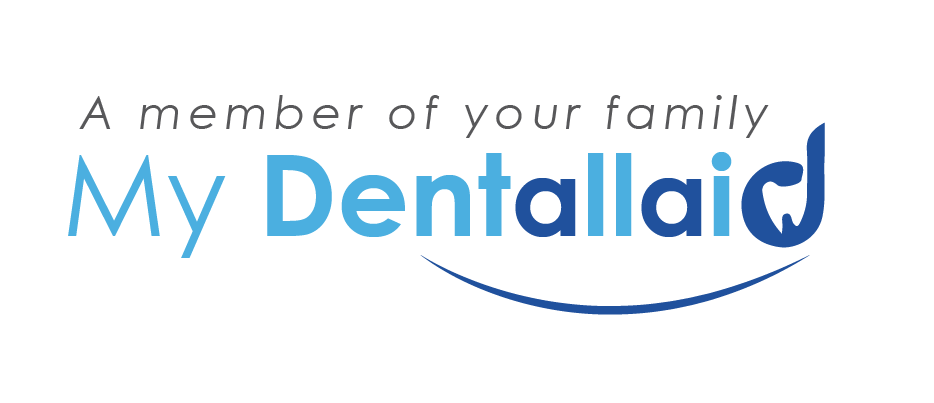Did you know headaches can arise from unexpected sources? Unraveling the relationship between tooth decay, infections, and headaches sheds light on these unexpected contributors to discomfort. Understanding how oral health issues like tooth decay and infection intertwine with headaches is essential for effective resolution. Here are other important details to know!
What Causes Tooth Decay?
Curious about what leads to tooth decay? Tooth decay, also known as cavities or dental caries, occurs due to bacterial activity in the mouth. These bacteria thrive on sugars, generating acids that gradually wear down tooth enamel, initiating decay over time.
Understanding the significance of dental care is crucial in preventing such decay. Neglecting oral hygiene can pave the way for these bacteria to thrive, ultimately causing damage to teeth and affecting broader health.
Preventing tooth decay involves regular brushing, flossing, and routine dental check-ups. By prioritizing dental care, you not only maintain healthy teeth but also contribute to your overall well-being.
Table of contents
- What Causes Tooth Decay?
- Tooth-Related Headaches Beyond Decay and Infection
- Exploring Tooth Decay’s Impact on Headaches
- What is Causes and Symptoms to Tooth Infections?
- How Infections Trigger Headaches?
- What is the Treatment Options for Decay and Infection in Teeth?
- The Potential Link Between Tooth Infections and Headaches
- Finally
- FAQ
Tooth-Related Headaches Beyond Decay and Infection
Beyond decay and infection, teeth grinding (bruxism) can contribute significantly to headaches.
Bruxism, often an unconscious habit, involves clenching or grinding teeth, exerting immense pressure on the jaw and teeth. Over time, this incessant grinding can lead to tooth wear, fractures, and even muscle strain in the jaw.
Interestingly, the repercussions of bruxism extend beyond dental issues. The strain from constant teeth grinding can trigger tension headaches or migraines. The tension in the jaw muscles can radiate pain to the temples, forehead, or even the neck, resulting in persistent headaches.
Understanding this link emphasizes the holistic impact of oral health on headaches. Addressing bruxism involves interventions like mouthguards to mitigate tooth damage and alleviate associated headaches.
Comprehensive dental care encompasses not only managing decay and infections but also addressing habits like bruxism to prevent further complications, including headaches
By prioritizing regular dental check-ups and adopting relaxation techniques to curb teeth grinding, individuals can mitigate the potential for tooth-related headaches, ensuring both oral health and overall well-being.
Exploring Tooth Decay’s Impact on Headaches
Research suggests that untreated tooth decay might lead to headaches in some individuals. When a tooth becomes infected or abscessed due to decay, the nerve endings in the tooth become sensitive, causing pain that radiates to surrounding areas, including the head. This pain might manifest as headaches, particularly in cases where the decay has reached a more advanced stage.

What is Causes and Symptoms to Tooth Infections?
Tooth infections, commonly resulting from untreated tooth decay or trauma, occur when bacteria invade the tooth’s pulp. This infection can cause severe pain, swelling, and sometimes even fever.
Neglected tooth infections can potentially spread to other parts of the body, impacting overall health and leading to systemic issues if left untreated.
Read More: Why No Dairy After Dental Implant?
How Infections Trigger Headaches?
Studies have shown a compelling association between severe tooth infections and intense headaches. The bacterial presence and inflammation from the infection can contribute to headaches.
The proximity of dental nerves to the trigeminal nerve, responsible for sensation in the face and head, can intensify headaches when affected by infection.
Read More: How Long Can You Keep Your Teeth with Periodontal Disease?
What is the Treatment Options for Decay and Infection in Teeth?
The treatment for decayed and infected teeth involves targeted procedures to effectively manage these dental concerns.
For decayed teeth, treatment options encompass;
- Fillings: Dentists eliminate decayed sections and employ materials like amalgam or composite resin to fill cavities, restoring the tooth’s structure and function.
- Root Canal Treatment: When decay penetrates the tooth’s pulp, a root canal becomes necessary. This procedure involves removing infected tissue, meticulously cleaning the area, and sealing it off to prevent further infection.
- Crown Placement: Severe decay often necessitates crowns to cover and shield the tooth post-extensive decay removal.
Concerning infected teeth, treatment avenues include;
- Antibiotics: Initially prescribed to manage and reduce infection before undertaking any dental procedures.
- Root Canal Treatment: Vital in eliminating infected pulp and salvaging the tooth.
- Extraction: In cases of persistent infection or when the tooth cannot be preserved, extraction becomes imperative to halt the spread of infection to neighboring areas.
Read More: How to Get Free Dental Implants in the UK? – What is Another Options?
Maintaining oral health through regular dental check-ups, diligent oral hygiene practices, and prompt action upon observing symptoms are pivotal in averting decay and infections. These proactive measures play a significant role in safeguarding oral health and curbing further complications.
Remember, seeking advice from a dentist for personalized treatment tailored to individual dental conditions is paramount for optimal oral care.
The Potential Link Between Tooth Infections and Headaches
Similarly, tooth infections, often caused by untreated decay, can result in severe discomfort. When an infection develops within the tooth, the surrounding tissues can become inflamed, leading to throbbing pain that may extend to the head. This inflammation and the associated discomfort can contribute to headaches or migraines in affected individuals.
Read More: What are the cheapest and best countries for dental jobs?
Finally
As result as, tooth decay, often initiated by cavities, begins as small, inconspicuous holes in the teeth, eventually expanding into larger cavities beneath the tooth surface. While cavities themselves may not directly induce headaches, their unchecked progression could lead to infections and abscesses, both recognized triggers for headaches.
As decay advances, inflammation or infection within the tooth or gum tissue activates nerve endings, resulting in localized pain. This discomfort can radiate, causing referred pain, potentially manifesting as a headache accompanying the initial toothache.
Moreover, untreated tooth and gum infections pose risks beyond localized pain. They can spread through the bloodstream to other body parts, potentially sparking severe health complications.
Understanding the interconnection between untreated tooth decay, resulting infections, and headaches emphasizes the significance of timely dental intervention. Seeking prompt treatment for decay not only alleviates oral discomfort but also averts the escalation of potential health issues.
Regular dental check ups, meticulous oral hygiene practices, and proactive measures upon noticing dental concerns significantly reduce the likelihood of decay induced headaches and broader health complications.
Our dental clinic, we offer all treatments mentioned in this article. If you suspect your headaches may be a sign of tooth decay, get in touch with us today. Our expert dentists will be able to assess your concerns and discuss treatment options with you.
Check Out Real Reviews: Dental Clinic in Istanbul | Check Out Real Reviews on Trustpillot
FAQ
Neglecting proper care for wisdom teeth may foster bacterial buildup, resulting in pericoronitis—an infection inducing discomfort and pressure around these teeth. This heightened pressure can lead to headaches.
Initially, cavities start as tiny holes, swiftly enlarging beneath the tooth’s surface. While cavities alone rarely trigger headaches, untreated cavities may progress into infections or abscesses, recognized as potential causes of headaches.
Holes in teeth, typically cavities, aren’t direct headache triggers. However, if untreated, these cavities can escalate into infections or abscesses, potentially leading to headaches.


